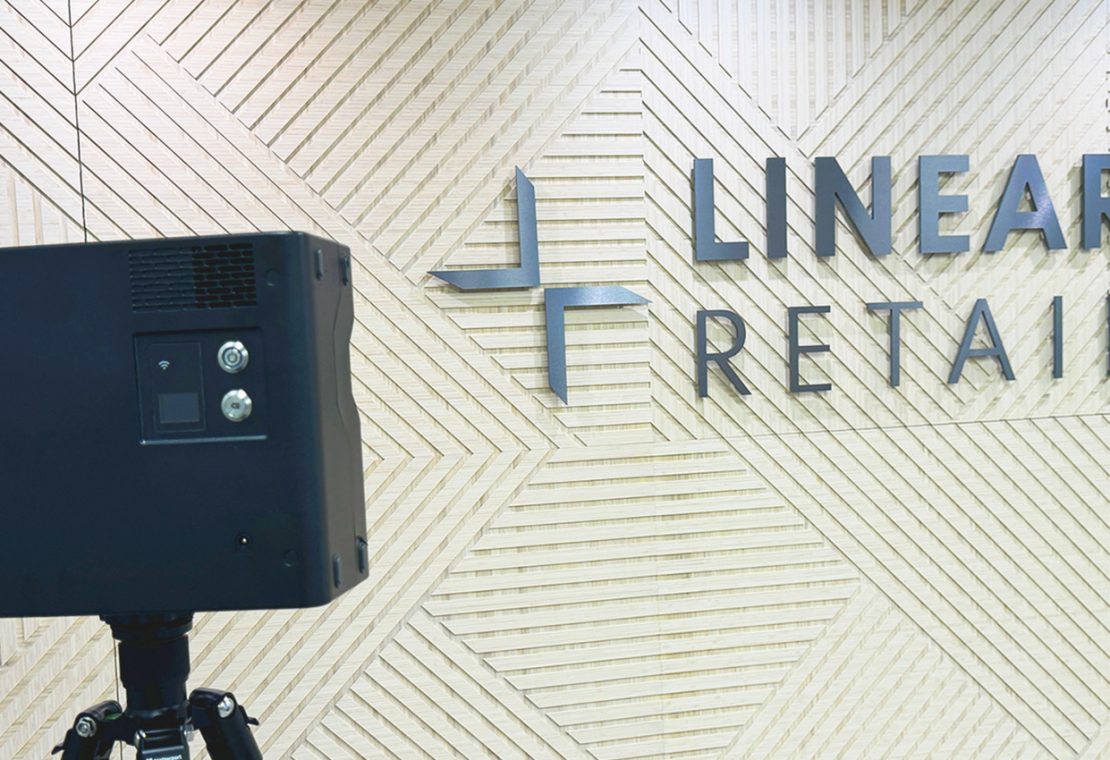
So you have decided to open your own business and are wondering why you should go through the trouble of creating a written business plan.
There Are 3 Major Reasons:
- The process of putting a business plan together forces you to take an objective, critical, unemotional look at your business in its entirety.
- The finished product – your business plan – is an operating tool which will help you to manage your business and work towards its success.
- The complete business plan is the means for communicating your ideas and provides necessary information to your landlord, among others. This will help you get in the door (figuratively and literally!) when looking for space and getting additional funding that may be needed to start your business.
The importance of planning cannot be overemphasized. By taking an objective look at your business, you can identify areas of weakness and strength, pinpoint needs, spot potential issues, and begin planning on how you can best achieve your business goals. As an operating tool, your business plan helps you establish objectives and figure out how to accomplish them. It also helps you flag problems as they arise and aids you in identifying their source, thus suggesting ways to solve them. It may even help you avoid problems altogether.
Another benefit is that when looking for space, your business plan will help you identify the best location for your business (by knowing your market demographic – target customer base) and help establish the rent that you can afford to be profitable, based on your projections. I often get calls from retailers who are looking for space but have no idea what kind of rent they can afford and what rent makes sense for their business model. Many calls come in for properties in areas that cannot sustain their particular business. The business plan will help you understand where to put your store and what to pay for the space.
A business plan for a retail store can be a complex multi-page document created using special software, Microsoft Word, or it can be a page torn from a notebook (if you don’t plan on sharing with anyone… which hopefully you will be). It can range from 5 pages to over 20 pages. The purpose of your business plan will determine how much info should be included and what format to use. For financing, you’ll have a better chance of convincing someone to fund your company if there are plenty of details provided. For finding a retail space, you will have the ability to show and prove to the landlord that you are the right business for their space.
Elements of a Business Plan
1. Executive Summary
An Executive Summary is critical to the success of the business plan. The Executive Summary offers a synopsis of the business plan and highlights the key points raised within. The Executive Summary is where you need to capture the reader’s attention so that he/she will be compelled to read on.
2. Business Analysis (Company Description & Market Analysis)
From the business structure, legal name, location, and goods or services offered, to an analysis of your customers and competition, this section will describe the nature of your retail business. You need to provide info on what you do and you need to define what differentiates your business from others. Before launching your business, it is essential for you to research your business industry, market, and competitors. Use easy-to-read, common terminology. Never assume that those reading your business plan have the same level of technical knowledge that you do.
Some details to include in your company description:
- Describe the nature of your business and the marketplace needs you are satisfying.
- Explain how your products and services meet these needs.
- List the specific consumers, organizations, or businesses that your company serves or will serve.
- Explain the competitive advantages that will make your business a success such as your location, expert personnel, efficient operations, or ability to bring value to your customers.
Some details to include when providing your analysis:
Industry Description and Outlook: Describe your industry, including its current size and historic growth rate, as well as other trends and characteristics (e.g., life cycle stage, projected growth rate). Next, list the major customer groups within your industry.
Information about your Target Market: Narrow your target market to a manageable size. Many businesses make the mistake of trying to appeal to too many markets. Research and include the following information about your market:
Distinguishing characteristics: What are the critical needs of your potential customers? Are those needs being met? What are the demographics of the group and where are they located? Are there any seasonal or cyclical purchasing trends that may impact your business?
Size of the primary target market: In addition to the size of your market, what data can you include about the annual purchases your market makes in your industry? What is the forecasted market growth for this group? For more information, see our market research guide for tips and free government resources that can help you build a market profile.
How much market share can you gain?: What is the market share percentage and number of customers you expect to obtain in a defined geographic area? Explain the logic behind your calculation.
Pricing and gross margin targets: Define your pricing structure, gross margin levels, and any discount that you plan to use.
When you include information about any of the market tests or research studies you have completed, be sure to focus only on the results of these tests. Any other details should be included in the appendix.
Competitive Analysis: Your competitive analysis should identify your competition by product line or service and market segment. Assess the following characteristics of the competitive landscape:
- Market share
- Strengths and weaknesses
- How important is your target market to your competitors?
- Are there any barriers that may hinder you as you enter the market?
- What is your window of opportunity to enter the market?
- Are there any indirect or secondary competitors who may impact your success?
- What barriers to market are there (e.g., changing technology, high investment cost, lack of quality personnel)?
3. Marketing Strategy
The Marketing Strategy section should explain how your retail business will penetrate your target market. Detail the company’s desired image and branding strategy. Give an overview of the company’s pricing strategies, current and potential marketing partnerships, and provide documented research to back your plan in this part.
It’s time to create demand and move that inventory off the shelves or get people sitting in your food establishment. Coming up with a way to advertise your retail business will bring exposure and foot traffic. Below are details to determine this strategy.
The first step is to determine who your target audience is. You can identify the characteristics of potential customers by asking these questions:
- Who will my product/service appeal to?
- Who can afford the price point of my product/service?
- What customers are in close proximity to my retail location?
- My product/service will most likely appeal to which gender, culture, and age group
The second step is to evaluate the competition. Find out what retailers in close geographic locations offer the same products/services you do. Conduct a search of those businesses to see if and where they are advertising. Because we live in a viral world, retailers are not only using traditional advertising like radio and print but there’s sources like blogs, and other social media outlets.
There are even services that can make your business appear as one of the first links listed in an online search. For example, if a customer types in “Fitness space, Burlington,” a paid search engine result would put your business at the top of the list.
Determine what advertising works best for your store and how you will allocate the money budgeted for marketing.
4. Products and Services
This business plan section is most important to retailers developing a business. The Products and Services section describes the goods and services offered, how they are provided, information about the vendors, and any plans for future growth of the product lines.
A crucial part of the plan is how you will obtain the goods being sold. Making sure the store always has what a customer asks for will reduce walkouts and the number of customers that don’t return.
The first step is to select a manufacturer or wholesaler that sells directly to retailers. If they don’t ship, find a company that will deliver your goods or choose another provider that does. If you are a food operation, the same applies.
During the selection process, research prices, the payment terms, how quickly they can fulfill re-orders, and whether or not you can get credit.
5. Management Plan
In the Management section, the information will show that the business has the necessary human resources to be successful. This part will answer questions about the key management personnel and their background, explain how the store will be staffed and detail all personnel compensation and benefits, including employment policies and procedures.
Define your Organizational Structure. A simple but effective way to lay out the structure of your company is to create an organizational chart with a narrative description. This will prove that you’re leaving nothing to chance, you have thought out everyone’s responsibilities, and there is someone in charge of every function of your company. Nothing will fall through the cracks, and nothing will be done three or four times over. To a potential investor or employee, that is very important. This section should include what kind of salary and benefits package do you have for your people? What incentives are you offering? How about promotions? Reassure your reader that the people you have on staff are more than just names on a letterhead.
You will also need to provide the Ownership Information. This section should also include the legal structure of your business along with the subsequent ownership information it relates to. Have you incorporated your business? If so, is it a C or S corporation? Or perhaps you have formed a partnership with someone. If so, is it a general or limited partnership? Or maybe you are a sole proprietor.
6. Financial Plan
One of the more difficult parts of the business plan (and one of the most important), the Financial Plan, will involve the company’s revenue and profitability model. This part assesses the amount of capital the business needs, as well as the proposed use of these funds and expected future earnings. It includes Break-even Analysis, Sales Forecasts, Balance Sheets, and Cash Flow Statements broken down monthly for the first year and then annually for the next 2-5 years. This is the information that will help you identify what you can spend on a retail space for your business.
There are numerous software packages or free online worksheets that can be used to tabulate starting inventory, fixtures/equipment, decorating, utilities, legal fees, advertising, licenses/permits, staff salaries, and other things that will cost the business money.
The bright side is calculating expected sales and finding out that your revenue is greater than your cost. If you are in the red, it is not necessarily a sign that the business is in bad shape but you may need to cut back or seek out a loan. Having extra equity will cover your expenses while you get the company off the ground. However, the best business plans show profitability early on in the life cycle.
7. Appendix
An appendix is optional, but a useful place to include information such as resumes, permits, and leases.
I hope you found the above information useful. Creating a business plan may seem daunting, but the good thing for you is that there are many online resources to help you through this process. On the web, you will find opportunities to purchase software that will create your business plan (with less effort). There are templates from all types of retail businesses to use as guidelines, and there are many organizations out there to help small business and independent retailers. One national organization, the U.S. Small Business Administration (www.sba.gov), provides plenty of online resources or you can speak directly with someone to walk you through a business plan and even guide you on how to fund your business. You may even qualify for an SBA loan! If you prefer to work with a local organization, most local Chambers have resources as well.
Once you are armed with a well-thought-out, organized business plan, you will begin to see many doors open. It will give you confidence when speaking with landlords, and in turn make landlords take you more seriously. It will give them confidence that you will add value to their current tenant mix, have the ability to afford the rent, and provide them with the comfort that you will make this business succeed.
Good luck on your search, and don’t forget to check out our portfolio of retail properties for your first (or next) location! I look forward to reading your business plan!
Cheers!
Blog written by Evan Eisenhardt, SVP of Leasing, Linear Retail.

